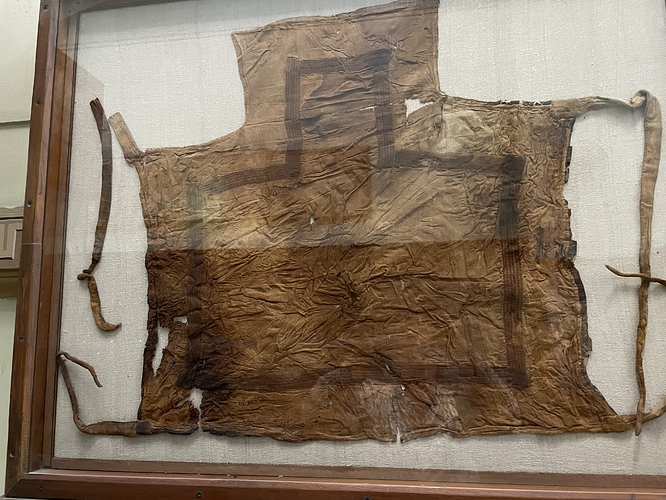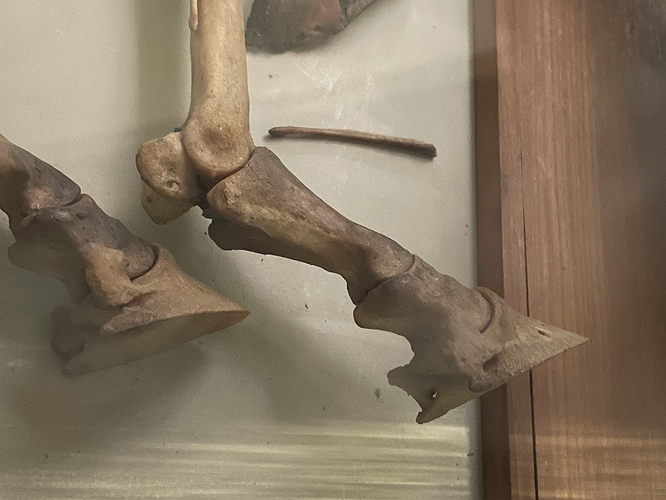This is cool…
If you like this, you might like Natasha Fijn’s short films about Mongolian pastoralists still living much as researchers believe our ancestors did. She has many more films, and research into horse-human pre-history is only now warming up.
No one’s asking, but some cave art experts think the fact that the horse shows up the most in our most ancient art, caves, sculptures, etc. means we have had a fundamental, possibly symbiotic relationship with equids for more than 40,000 years.
I’m a fan of the theory that equids’ ability to thrive during the Last Glacial Maximum made the difference in our own species’ survival.
I love the description of the likely first riders. 12 year olds feeling daring, lol. Isn’t that all of us as kids?
In the pastoralist cultures of Mongolia and along the Mongolian/Russian border, women and children usually tend to the mares for milking. The kids get pretty handy distracting and confining the foals. The urge to swing up seems irresistible, if successful for only a few seconds.
I have all of those biomechanical indicators. 
In the Egyptian museum in Cairo is a skeleton of a horse that was found with a cloth ‘saddle’. Clearly used for riding. About 4000 years old I believe.
Same. Yesterday, my sacroiliac was tight enough to nearly tip me onto my nose when I briefly forgot how old I am and dived for some errant baling twine.
That said, those of us still engaged in this ancient, anachronistic, equine practice seem to me the luckiest people alive.
David Anthony, the scientist Greenfield Boyce quotes, is both a big deal and a bit controversial.
His book, The Horse, the Wheel, and Language posits that both mounted and driven horses worked like a slow-moving nuclear bomb, revolutionizing warfare, and spreading commerce and language.
In his book, he alludes to a relationship with herded (followed, at the very least) horses going back tens of thousands of years.
According to archaeological evidence. horses were first introduced into Egypt during the Second Intermediate Period (about 1700-1550 BC). So a bit less than 4000 years ago. But they were primarily used for chariots. They are not shown being ridden until the New Kingdom. The earliest depictions I know about of Egyptians riding horses are from the late 18th Dynasty, and the 19th Dynasty (roughly 1300 BC)
I had the same reaction when reading the end of the article:
But who first had the bright idea of trying to ride a large, potentially dangerous animal like a horse? Anthony thinks it’s something that would only occur to someone looking for a thrill, someone who wouldn’t mind repeatedly getting thrown off.
“If you were, say, 12 years old, you know, and your sense of fear was not as highly developed,” says Anthony, adding that he thinks the first people to ride horses “were probably adolescents who were challenging each other to try again.”
Still valid today, lol.
This type of news isn’t really news to me, but that’s probably because I grew up reading all of Auel’s Earth’s Children books  Of COURSE early humans rode horses!
Of COURSE early humans rode horses!
Auel was my gateway drug to this topic, too.
Am I missing the list of physical characteristics the researchers came up with? I’m really curious to know more about them. This was the only thing I found in the article:
After seeing some skeletal damage that could be attributed to horseback riding, Trautmann and colleagues developed a checklist of six characteristics, such as pelvic microdamage and vertebrae degeneration, to distinguish horse riders in the sample.
I’m also curious about the wear patterns on the horses’ teeth indicating they wore bits. I’m guessing those horses had wear on the front of the first premolars? Forgive me if this is a silly question, but do we still see these wear patterns in modern horses? Does that change with the type of bit/placement/noseband use?
This article, though it predates this most recent discovery (dated 2019), has a detailed list of physical characteristics of ancient horseback riding
Thanks for sharing, I know what I’ll be reading tonight!
I am curious too. I didn’t think early humans had the technology / resources to make iron horse bits. I thought they used rope side pulls of some sort.
I skimmed the 2019 study - man, intensive horseback riding does a number on the human skeleton!
Many years ago I was reading an archeological article about archeologists trying to figure anything they could from a person’s skeleton. Sorry, I don’t remember where I read it or which civilization they were working on.
What I DID remember from the article was a discussion about how a woman, whose skeleton they excavated, made her living. The archeologist proposed that this particular woman was a prostitute because of how her pelvis had “deformed”. The archeologist wrote that the only other common thing that led to this type of pelvis was if a woman rode horseback a lot, which because of the civilization was extremely unlikely so they labeled her as a prostitute.
So my fellow riders, if you are buried I suggest that you include some grave goods in the coffin, bits, stirrups and spurs probably could last a long time. Just include something so that a few centuries or millenia from now archeologists do not name you a prostitute when the reason your pelvis is different is because you rode horses A LOT!!!
How is this for a PSA? Protect your reputation beyond death or you may be mislabeled!
I hate to break it to you but the presence of whips/spurs/bits in a coffin might make not give the impression you’re hoping for!
Maybe not, but I would rather be mislabeled as a dominatrix than a prostitute. Of course not all dominatrixes ride horses so I could see that as causing archeological confusion.
As far as “Pony Play” the archeologist would have to check the type of tooth wear on the bit as well as the state of the woman’s pelvis.


